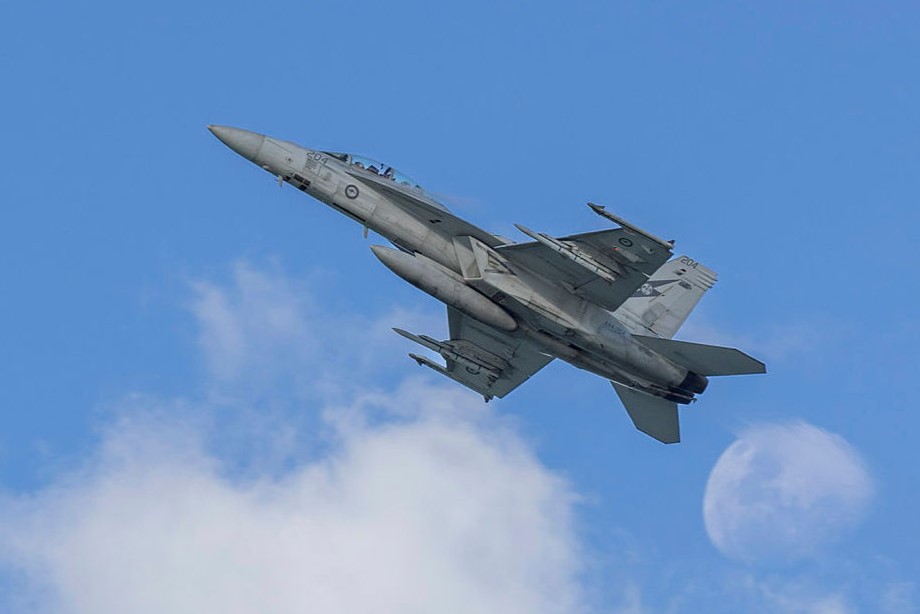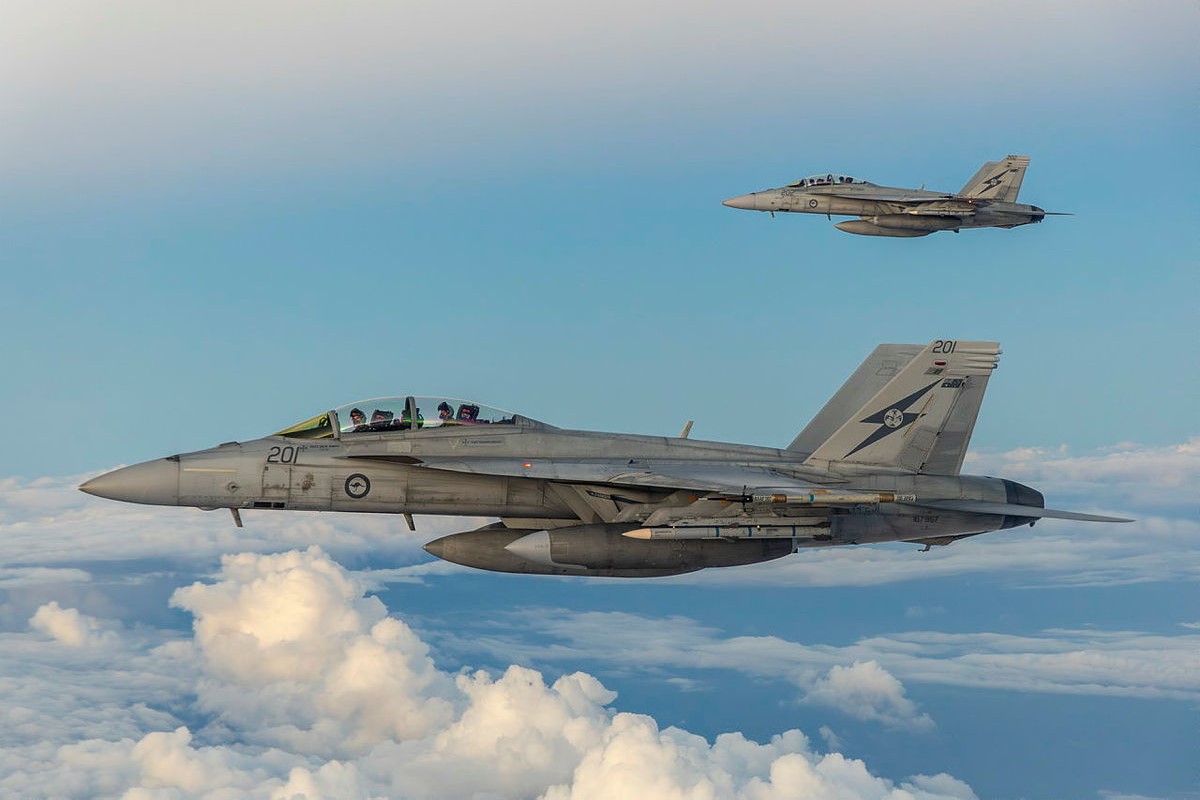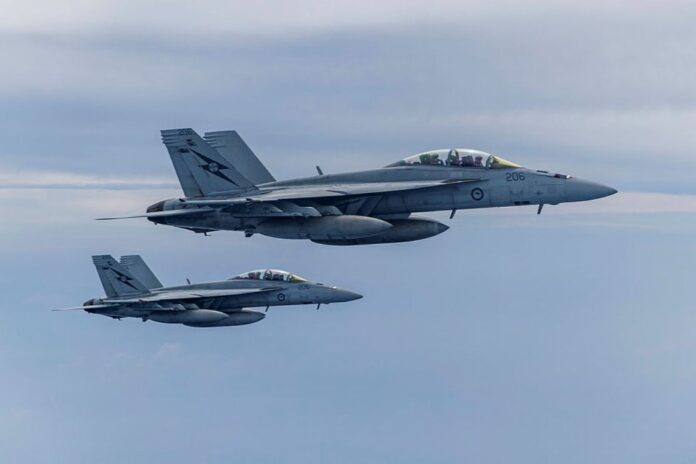Some of the Australia’s most versatile and powerful military assets recently roared over the Sunshine Coast, highlighting the region’s key role for the Royal Australian Air Force.
Two F/A-18F Super Hornet aircraft were put through their paces during exercises around the airport at Marcoola on Thursday.
Amazed locals turned their heads skyward to see the sleek machines.
“Impressive”, “awesome” and “so cool” some of them said via social media.
The jets, from RAAF Base Amberley near Ipswich, were involved in familiarisation and diversion training flights.
A Defence spokesperson explained the important of the exercises.

“Diversion training is an essential element of routine training that provides Air Force pilots with critical experience flying in areas other than military training zones and helps to familiarise pilots with a range of different airfields,” the spokesperson said.
“Diversion training also helps familiarise civilian air traffic controllers with military aircraft operations and safety requirements.”
The Sunshine Coast is one of the Air Force’s key areas for training.
“Brisbane International Airport, Toowoomba Wellcamp Airport and Sunshine Coast Airport are designated diversion airfields for military fast jet aircraft operating out of RAAF Base Amberley,” the spokesperson said.
Two Boeing EA-18G Growler aircraft wowed onlookers in November, when there were also reports of a C-17A Globemaster III.
“No.1 Squadron routinely operates the F/A-18F Super Hornet aircraft from various military and civilian airfields as part of the normal training cycle,” the spokesperson added.
“Training flights are planned to minimise disruptions to other airfield users and the public wherever possible.
Do you have an opinion to share? Submit a Letter to the Editor at Sunshine Coast News via news@sunshinecoastnews.com.au. You must include your name and suburb.
“Air Force and No.1 Squadron appreciate the understanding and ongoing support shown by the community in response to routine flying operations.”
The Air Force has 24 F/A-18F Super Hornet aircraft, which can be utilised alongside F035A Lightning IIs and EA-18 Growlers.
The Hornets, which started operating in late 2012, can be used for air interception, air combat, close air support of ground troops and interception of enemy supply lines including shipping.
The Boeing-manufactured multi-role fighter planes have a crew of two, including a pilot and a weapon systems officer.

They are 18.3m long with a wingspan of 13.6m and weigh 13,387kg.
They have two F414-FE-400 turbofans, with 22,000lb of thrush each.
Super Hornets have a range of 2700km, can climb to 50,000 feet and have a maximum speed of 1960kmh (Mach 1.6).
They have a range of abilities, including radar and infrared sensing and targeting systems, electronic warfare and infra-red self-protection systems.
They also have a range of weapons, including medium range air-to-air missiles, ‘sidewinder’ short range air-to-air missiles, conventional and laser guided bombs, harpoon anti-ship missile and nose-mounted gun system.





